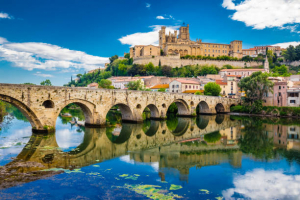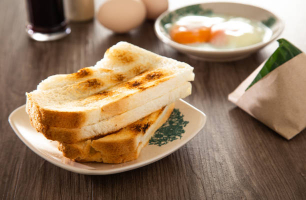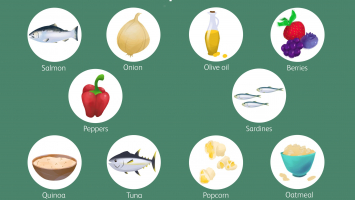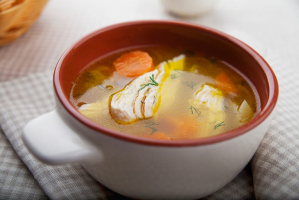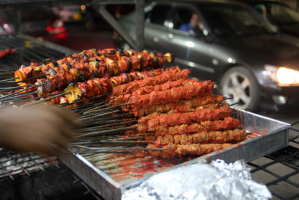Top 13 Best Foods And Drinks to Try In Rome, Italy
Rome, one of the most important ancient cities in the world, is a bustling modern city and archaeological site that is situated in the Lazio region of central ... read more...Italy. It would be an understatement to say that the city is lovely. A culinary paradise steeped in centuries of tradition, culture, cuisine, and wine, Rome is also. Investigating a city or nation's cuisine is one of the best methods to learn about its culture. Roman agriculture and aquaculture were deeply ingrained in the development of the cuisine over many years. These are the greatest foods and beverages to sample while visiting this location.
-
Italians have elevated the art of pastry making. Italian pastries are both aesthetically pleasing and delectably delicious. They range from exquisite and gilded tiny cake masterpieces to miniature pastry tarts filled with pastry crème and garnished with seasonal fruit, pinon nuts, or broken walnuts. Pastry in Rome adopts local flavorings and regional characteristics. From Sicily to Milan, ricotta cheese is frequently used as a sweetened filling for pastries. Ricotta is a staple of both sweet and savory Roman cuisine and is made in Lazio from buffalo, cow, goat, or sheep milk, according to CNN. It may have its origins in ancient Rome.
Ricotta is a fantastic filling for cannoli and castagnole, which are little puffs of deep-fried pastry the size of a castagna that are made in Rome and the surrounding areas (chestnut). Castagnole and larger bombolone Laziale, filled doughnuts with sugar coating, are both filled with pastry cream, chocolate cream, and nut pastes. Imagine sizzling hot, deep-fried pockets of sweetened dough filled with ricotta filling that has been citrus-infused, pastry cream, hazelnut chocolate, fig jam, or jam. According to "DK Eyewitness Travel Italy," Lazian torta di ricotta is a cheesecake made in the style of Rome and loaded with delectable marsala wine and lemon. According to Katie Parla's book "Tasting Rome," popular and delectable Roman sweets include zabaione and brutti ma buoni (hazelnut meringues).

Roman confections 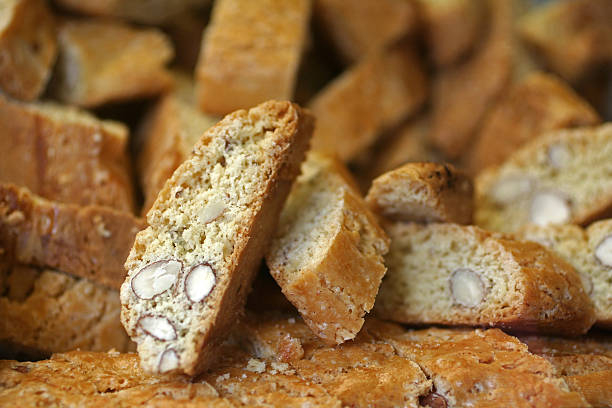
Roman confections -
From north to south, castagne (chestnut) trees can be found everywhere in Italy. The towering tree offers summertime shade and fall fruit that is delectable. According to La Cucina Italiana, the delicious tiny nut has been a favorite of Italians for centuries. According to Healthline, it is a starchy yet soft nut enclosed in a dark auburn-hued shell that is rich in nutrients, fiber, protein, and antioxidants. In many parts of Europe each winter, street vendors selling chestnuts over an open fire can be found selling piping hot castagne, a classic holiday delight.
For your holiday meal, La Cucina Italiana advises roasting your own castagne in iron skillets over a flame or attempting to roast them in a hot oven if you are fortunate enough to have an open fireplace. Castagnes are a year-round delicacy with delicate, earthy, nutty, and somewhat sweet flavors that go well with both savory and sweet foods. They are not merely a winter holiday treat. The addition of castagne to traditional Italian recipes like risotto or loaded pasta like agnolotti is fantastic. They go well with roasted meats and vegetables as well as mushrooms. They taste great when combined with cocoa and a touch of espresso in whipped cream. Every autumn, castagne crème is used to fill pastries that contain candied citrus peel and shaved chocolate on top.
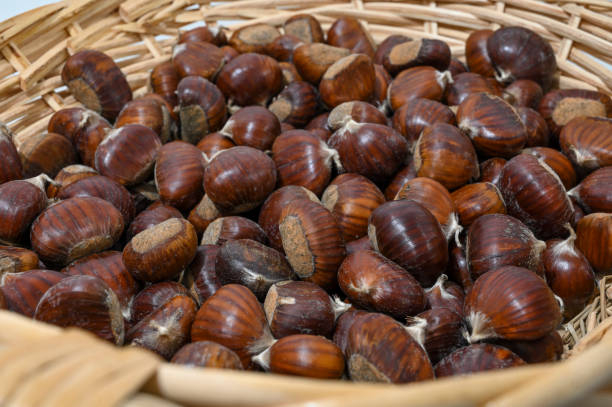
Castagne (chestnuts) 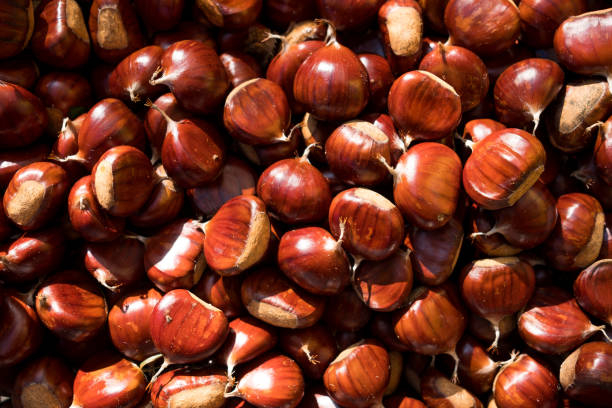
Castagne (chestnuts) -
Italians prefer strong, unsweetened coffee and take it seriously. There are several café bars all across Rome, and the majority of them offer espresso along with sandwiches, pastries, and other mouthwatering items. According to the Roman Food Tour, espresso drinks are frequently ordered at the counter and consumed there while standing up. Table service is more expensive, whereas counter service is quicker. According to Lavazza, espresso is made in a specialized machine that "pulls a shot" of coffee by applying pressure to a little lever that contains pressurized espresso powder. Espresso frequently appears in Italian desserts, notably the traditional tiramisu, in addition to being a mid-afternoon pick-me-up or an after-dinner digestive (digestif).
Although less common in Rome and throughout Italy, milky lattes are still available. The coffee with milk that Romans enjoy with their breakfast is known as a cappuccino. According to Lavazza, a cappuccino is produced by pouring one or two shots of espresso into a small, warmed coffee cup and topping it with a sizable dollop of firm creamy froth. Cocoa, cinnamon, cardamom, nutmeg, or sugar can be added to cappuccinos, which are then carefully mixed to combine the ingredients before drinking leisurely to enjoy the taste. The address of Antico Caffè Greco is 86 Via dei Condotti. One of the third-oldest cafes in the world, it first opened its doors in 1760.

Italian caffé 
Italian caffé -
Gelato is an experience that you never forget. Gelato is a decadent Italian frozen delicacy made with milk, cream, sugar, and flavorings including fresh fruit, liqueurs, spices, and nuts. Italian gelato is distinguished from American ice cream by Food Network because it has a silkier, denser texture. Gelato omits egg yolks and utilizes more milk and less cream. It is served a little warmer than usual to accentuate the mouthwatering taste because it isn't as creamy as ice cream. Pistachio, lemon, strawberry, raspberry, chestnut, vanilla, hazelnut, mint, cinnamon, chocolate, and basil are traditional flavors of gelato. Gelato makers that are daring play with tastes like wine, booze, and exotic ones like lychee and yuzu.
Nearly every corner of the city has a gelateria store, but if you're a visitor, you'll obviously want to find the greatest gelato in Rome. Visit the family-owned, 1880-old Palazzo del Freddo di Giovanni Fassi gelateria for a cup or cone of fluffy gelato; frozen gelato cake is also a tasty treat. The most crucial thing to keep in mind while purchasing gelato is to search for seasonally appropriate flavors and subdued hues to guarantee quality and authenticity.

Gelato 
Gelato -
According to National Geographic, artichokes first appeared on Greco-Roman tables as early as 2,500 years ago. Artichokes are the edible flower buds of a thistle plant that is native to the Mediterranean regions of North Africa, Italy, and Greece. During the Roman Empire and the Renaissance, when the flower bud was revered as an aphrodisiac, artichokes developed into a mainstay on Roman banquets. According to Britannica, artichokes are still regarded for their distinct robust flavor and rustic texture in addition to being high in potassium, vitamin C, and fiber. According to Falstaff, the internal downy choke that must be removed before consuming the sensitive heart is absent from the Roman artichoke variety known as the carciofi romaneschi.
Carciofi alla giudia, as the meal is known there, is a crispy, twice-deep-fried artichoke that is served with lemon. It is especially well-liked in Trastevere, Rome's former Jewish neighborhood. According to "Tasting Rome", the traditional Roman artichoke preparation, carciofi alla Romana, flavors the tender artichoke hearts by cooking them slowly with lots of garlic and flavorful herbs. The flavorful artichoke hearts can then be mashed into a rough paste to be spread on bruschetta or incorporated into pasta dishes. Marinated artichoke hearts are frequently found on antipasti platters, and finely minced artichoke hearts blended with Pecorin
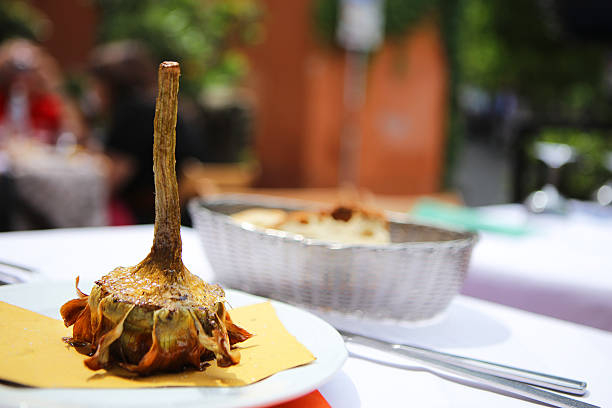
Artichokes 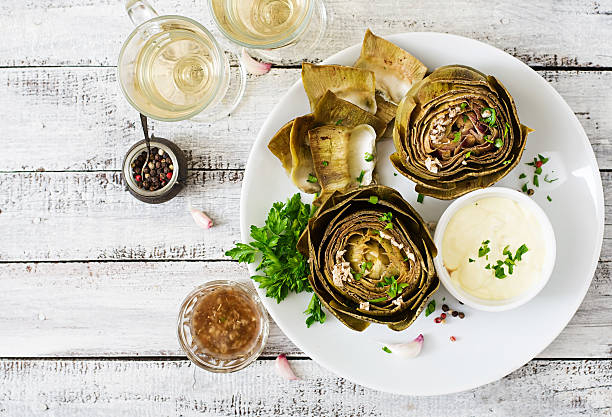
Artichokes -
The lovely saffron-orange blossoms of zucchini and squash vines are known as fiori di zucca. Fiori di zucca has a delicate yet distinctively earthy, flowery flavor and perfume that tantalizes the mouth as much as the eyes. There are fifteen different varieties of zucchini and other varieties of squash, each of which bears mouthwatering flowers, according to All About Gardening. The contemporary zucchini was first grown by Italians in the nineteenth century. Zucchini flowers are a Roman delicacy that is served over pizza, pasta, and pancakes as well as eaten raw on salads and frittered as an appetizer.
Fritters made from fiori di zucca are delicious and simple to make. The delicate petals are packed with thin buffalo mozzarella slices and a thin anchovy filet before being battered in a mixture of flour and sparkling water, according to "Tasting Rome." The petals are then compressed tightly before the filled flower is dropped into extremely hot oil and cooked for a few minutes until evenly browned. In the late summer and early fall, Roman pizza frequently includes fiori di zucca. Fresh pizza dough brushed with olive oil should be topped with a scattering of fiori di zucca arranged in a lovely design. Add a liberal amount of mozzarella, then bake at a high temperature for a few minutes, or until the cheese melts and the crust is crunchy.. If you visit Rome in late summer and autumn, fiori di zucca will be everywhere.
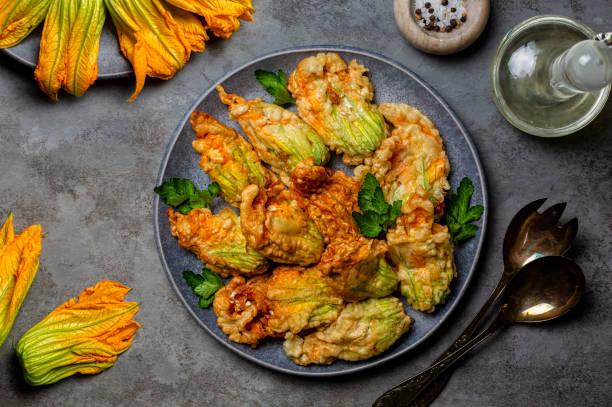
Fiori di Zucca 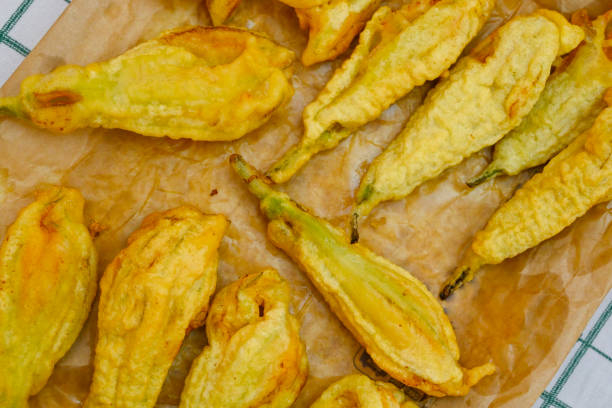
Fiori di Zucca -
Since the time of ancient Rome and perhaps earlier, Italians have salted-cured meat, especially pork. You can find specialty food stores across the city that feature packages of shaved prosciutto and crudo and legs of cured prosciutto prominently displayed in their storefront windows. Stacks of Roman cheeses, bottles of olive oil, brined olives, and crusty bread are waiting to be made into a picnic as you peek through the door. To ensure the highest quality and authenticity, look for prosciutto from Parma, Modena, Toscana, and San Daniele, all of which have protected designations of origin (DOP) certification.
There are numerous varieties of cured meats from various countries, but Italian prosciutto is among the most well-known. Italians manufacture their famed prosciutto, which is coveted for its delicate sweet and salty flavors and considerable creamy marbling, using certain heritage hogs that are given similarly precise diets. Italian cuisine relies heavily on prosciutto, which is produced all throughout the Italian peninsula. According to Food Processing History, early Romans inherited the salt-curing method from ancient Greece, making it a delectable Roman custom.
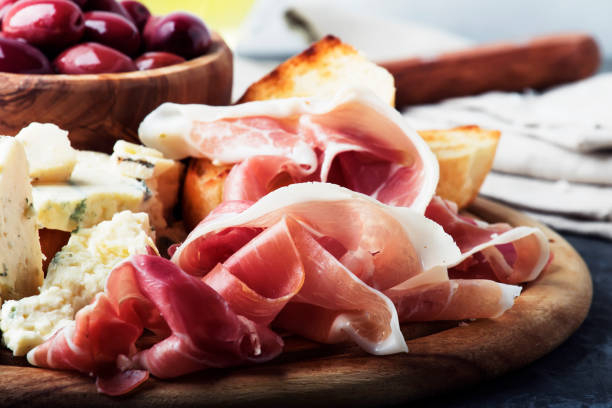
Cured Italian prosciutto 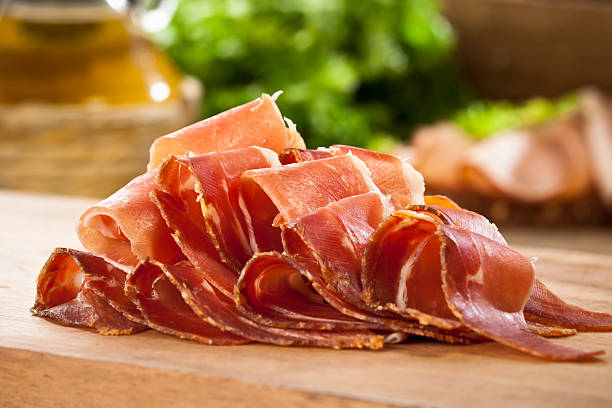
Cured Italian prosciutto -
Another excellent pasta dish that is probably a Rome specialty is rich and silky spaghetti alla carbonara, according to Taste Atlas. The easy-to-make dish of sloppy cheese, egg, pancetta, guanciale, or bacon is served in trattorias all around the city. The first recorded reference to the meal dates back to a circa 1839 provincial cookbook; La Cucina Italiana seeks to clarify the hazy roots of the dish, which are frequently attributed to underprivileged American soldiers stationed in Italy during World War II. The first publication of carbonara was the cookbook Italian Food in 1954. Whatever its roots, spaghetti alla carbonara is a Rome-only specialty that should not be missed.
Don't worry, you will burn off the calories quickly thanks to the city's many attractions and its winding, hilly streets. Make the dish's foundation out of a long, thin pasta shape like fettuccine, bucatini, or spaghetti. Toss a few beaten eggs with some crumbled crispy guanciale (or bacon, hog belly, and pancetta) with your preferred hot pasta. Finish with a generous sprinkle of freshly ground pepper and Pecorino Romano cheese. I'm done now. Purists won't stray from the traditional meal, but modern variations on carbonara include asparagus, artichokes, and arugula as well as fresh, smoked, or tinned seafood like anchovies. A few fiori di zucca will make a stunning presentation.
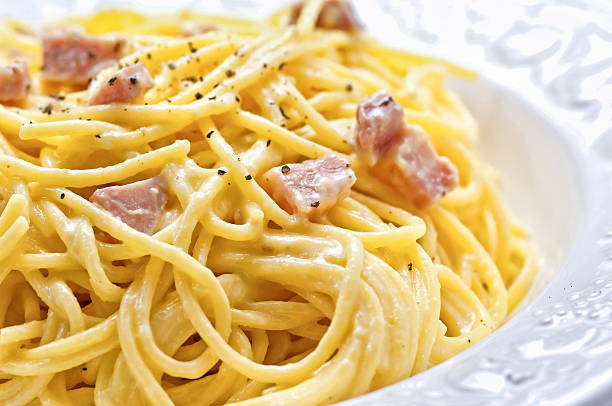
Spaghetti alla Carbonara 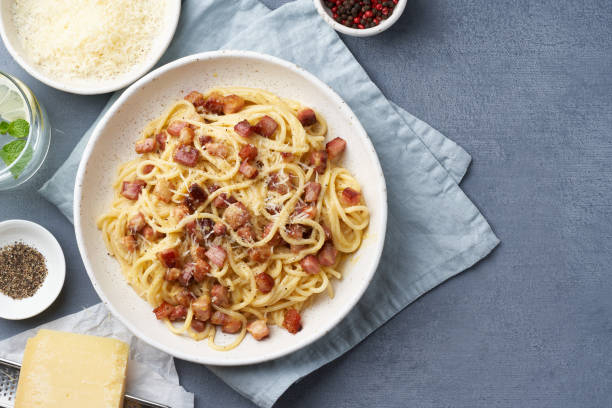
Spaghetti alla Carbonara -
A revitalizing tangy-sweet lemon-infused liquor, limoncello is made in homes, eateries, and distilleries all over southern Italy. Despite not being a local drink in Rome, limoncello is available in stores and restaurants all across the city. The first limoncello was produced from fragrant Sorrento lemons along the Amalfi coast. There are two types of limoncello: a creamy variety and a crystalline golden one. Both are similarly strong and aromatic, and they should be consumed out of little sherry glasses while being served ice cold.
Italy is the world's top producer of lemons, so it seems sensible that they would create a delightful liqueur with a lemon aroma to please the tongue. The lemon-flavored liqueur is most frequently drank as a digestive after dinner, although it can also be found in desserts and drinks. The traditional method for making limoncello is to soak sugar and lemon zest in vodka or another clear spirit until the alcohol is deeply colored and aromatic. The best limoncello currently on the market, according to experts, is Limone di Sorrento IGP (Protected Geographic Indication). For a tasty memento of Rome, buy a few bottles to take home or try creating your own limoncello.

Limoncello liqueur 
Limoncello liqueur -
A contemporary Roman invention is cacio e pepe. It is a tasty yet straightforward recipe made with Pecorino Romano (cacio), a local sheep milk cheese, and a dash of pepper (pepe). There are only three ingredients in total. Cacio e pepe, as Anthony Bourdain said on an episode of No Reservations, "may be the greatest thing in the history of the world," but difficult to prepare flawlessly, according to BBC Travel.
The secret to making cacio e pepe, according to La Cucina Italiana, is skillfully combining just the proper quantity of finely grated Pecorino Romano cheese with the hot, starchy boiling water to emulsify the cheese and create a rich sauce that delicately coats each tonnarelli or spaghetti piece. A single error will result in a clumpy mass of cheese pieces that bind the spaghetti together. Butter, oil, or wheat are never used as thickeners in genuine cacio e pepe from Rome. In Rome, it can be difficult to find the perfect cacio e pepe platter. Too many eateries skimp on their sauces by including thickeners or butter. For the best cacio e pepe, seek out classic trattorias with tableside service.
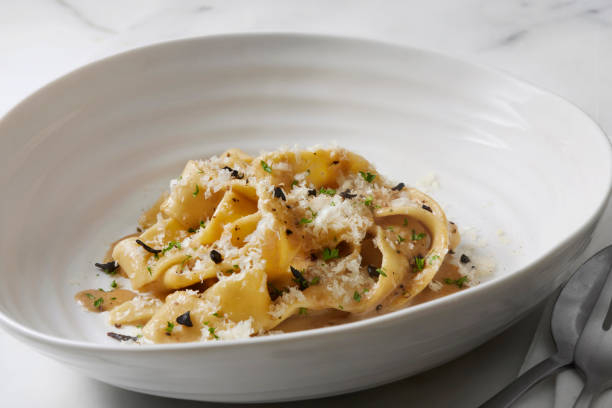
Cacio e pepe 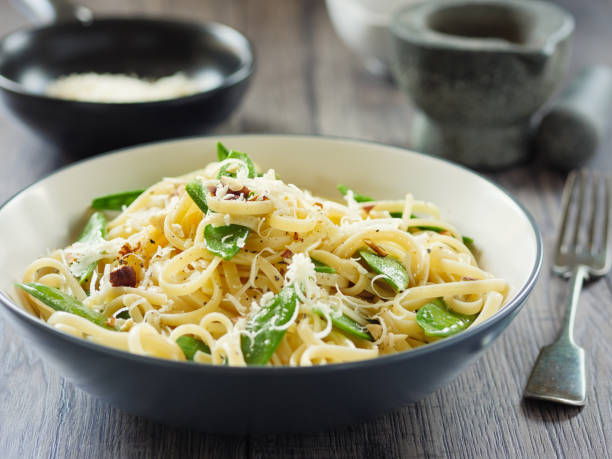
Cacio e pepe -
Why is pizza such a universally adored food? Pizza is regarded by pizza aficionados all around the world as the ideal cuisine because of its warm, yeasty crust topped with basic toppings. Pizza is even meant to be eaten with one's hands. The Neapolitan Pizzaiuolo method, which involves making the dough, tossing the crust, and baking the pizza in a wood-fired oven, is zealously guarded by Italians. According to UNESCO, the procedure even received the coveted UNESCO title in 2017 for its contribution to Italy's intangible cultural heritage.
Pizza al taglio, or Roman pizza, is said to set itself apart from its more well-known cousin by being prepared on a rectangular sheet pan and having a distinctive, slightly thicker crust. Roman pizza is distinctive for a number of reasons, one of which is that it requires more baking time. Toppings that are appropriate for the season include a combination of local cheeses, tomatoes, and basil with a drizzle of olive oil, fiori di zucca and mozzarella, prosciutto and figs, potato and guanciale with Pecorino Romano cheese, artichokes, and cheese, or mushrooms and sausage. It is offered by the slice or kilo and is served in a waxed paper sleeve in pizzerias and bakeries all across Rome.
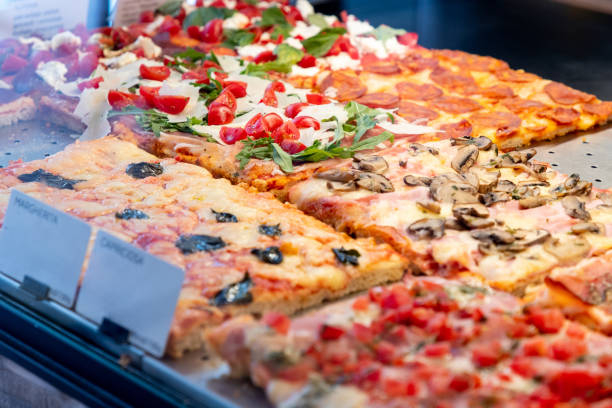
Roman pizza — pizza al taglio 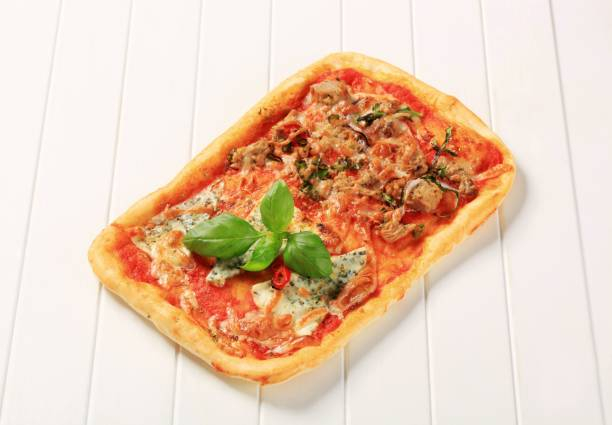
Roman pizza — pizza al taglio -
Each nation or area has its own favorite street food. Suppl di riso in Rome meets the criteria. Suppl di riso are small rice croquettes that are served hot and stuffed with meat, eggs, cheese, and vegetables. Arancini, which are frequently served on Italian immigrant holiday tables in southern Italy and all over the United States, are smaller than suppl. According to "Tasting Rome", suppli classici are packed with mozzarella cheese, pig sausage, and chicken liver.
One of the greatest places to get supplies in Rome is Supplizio Roma. Master suppl chef Arcangelo Dandini creates traditional Roman delicacies like cheesy bacon and egg carbonara and cacio e pepe loaded with Pecorino cheese and pepper in his elevated suppl, which is situated close to the Tiber River and just west of the Piazza Navona. The rice-filled little balls that are deep-fried have a crunchy, browned exterior and a rich, creamy interior. According to legend, the word "suppl" is derived from the French word "surprise", alluding to the delicious treats that are concealed inside the rice croquette. However, exceptional suppl are perfect on their own. Typically, suppl is served with marinara for dipping.

Supplì di Riso 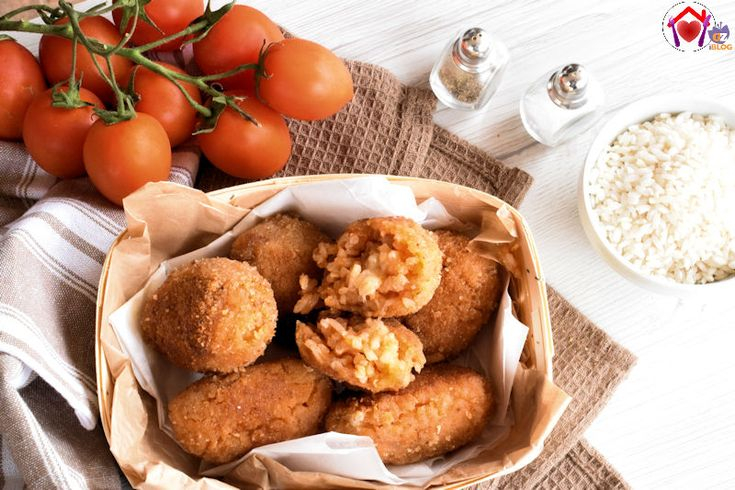
Supplì di Riso -
Filetti di baccalà is large cod filets that are deep-fried and a staple of contemporary Roman cuisine (via Serious Eats). The cod fritter, which was first a delicacy of Sephardic Jewish street cuisine, is now loved all over Italy and the Mediterranean. Cod fritters are a delectable staple in England when eaten with deep-fried potato slices as fish and chips. Cod fritters can be found in seaside regions from Italy west to Portugal.
According to History Today, the majority of salt cod originates in the frigid Atlantic waters that stretch from North America to the Barents Sea above Norway. For native North Americans, Scandinavians, and early Europeans, cod was a staple food. Viking explorers in the eighth century started air-drying cod for food while traveling across Europe and to North America. Porto, Portugal, developed and became a salt cod trading hub in the 1600s. Eventually, fish gained prominence as a culinary component in the cuisines of Iberia, France, and Italy. The commerce in salt cod and dried cod thereafter started.
In order to reconstitute the fish and get rid of the salty residue, filetti di baccalà employs dried salt cod that has been soaked and rinsed. The fish is delicately cooked till crisp and golden after being dredged in a batter made of flour, white wine, and egg. Filetti of cod is served in Rome with wedges of fresh lemon. Look for it all over Rome in trattorias and food carts.

Filetti di Baccalà 
Filetti di Baccalà















